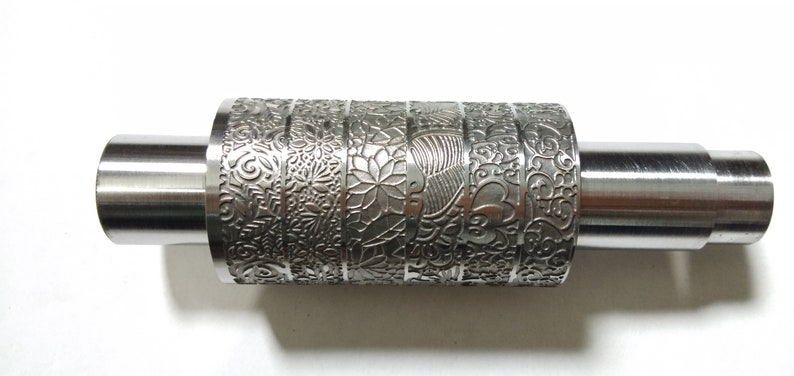

The texture on the left was carved with a 3.5 mm round ball bur. Here are the textures, pictured with their tools. I also played around with bits and burs on some pieces of tin.

The thin side of the Fretz/Good planisher. Used the side of my chasing hammer’s head here.Įmployed the thick edge of my Fretz/Good planisher. My Peddinghaus raising hammercreated this. I used the ball peen end of my chasing hammer for this texture.Ī smaller ball peen was used for this texture. On this sheet of copper are 6 patterns created with hammers. Just to show you the variety of finishes, easily produced. You probably already have plenty of tools to create your own patterns – without buying anything.īelow, are some of the textures that I made today. (Bonny Doon pattern plate #17 at Rio Grande) (Forest of Leaves pattern at Supply Divaon Etsy) There are manufactured textures available in nickel, copper or brass platesused in the rolling mill or by hammering them against metal (more on this later). With the advent of cheap, easy to purchase laser cutters, many more people are creating their own texture papers and vinyls. That said, there are a ton of amazingly beautiful textures for metal out there in the interweb! Check out my just a few of them on my Pinterest Board: Textures. Which is why, creating your own textures, allows you to fully express your visions. Although, some textures, are best left “as is”.

Combined with the usage of patinas, the beauty of your texture can be further enhanced. Texturing adds depth and interest to your work. Patterns can be etched, hammered, drilled, sanded, bur-ed, built-up and rolled into the metal. Almost anything can be used: gravel, sidewalks, leaves, fabric, hammers, paper, bits, etc. Texturing metal is a lot of fun and there are a ton of tools available, to create interesting patterns.


 0 kommentar(er)
0 kommentar(er)
